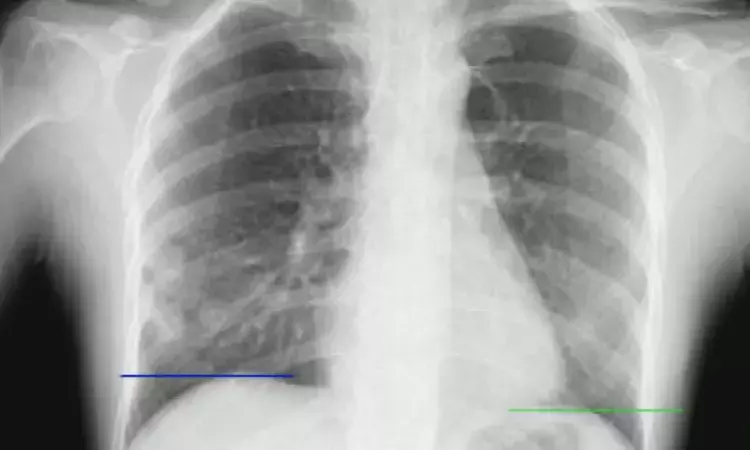- Home
- Medical news & Guidelines
- Anesthesiology
- Cardiology and CTVS
- Critical Care
- Dentistry
- Dermatology
- Diabetes and Endocrinology
- ENT
- Gastroenterology
- Medicine
- Nephrology
- Neurology
- Obstretics-Gynaecology
- Oncology
- Ophthalmology
- Orthopaedics
- Pediatrics-Neonatology
- Psychiatry
- Pulmonology
- Radiology
- Surgery
- Urology
- Laboratory Medicine
- Diet
- Nursing
- Paramedical
- Physiotherapy
- Health news
- Fact Check
- Bone Health Fact Check
- Brain Health Fact Check
- Cancer Related Fact Check
- Child Care Fact Check
- Dental and oral health fact check
- Diabetes and metabolic health fact check
- Diet and Nutrition Fact Check
- Eye and ENT Care Fact Check
- Fitness fact check
- Gut health fact check
- Heart health fact check
- Kidney health fact check
- Medical education fact check
- Men's health fact check
- Respiratory fact check
- Skin and hair care fact check
- Vaccine and Immunization fact check
- Women's health fact check
- AYUSH
- State News
- Andaman and Nicobar Islands
- Andhra Pradesh
- Arunachal Pradesh
- Assam
- Bihar
- Chandigarh
- Chattisgarh
- Dadra and Nagar Haveli
- Daman and Diu
- Delhi
- Goa
- Gujarat
- Haryana
- Himachal Pradesh
- Jammu & Kashmir
- Jharkhand
- Karnataka
- Kerala
- Ladakh
- Lakshadweep
- Madhya Pradesh
- Maharashtra
- Manipur
- Meghalaya
- Mizoram
- Nagaland
- Odisha
- Puducherry
- Punjab
- Rajasthan
- Sikkim
- Tamil Nadu
- Telangana
- Tripura
- Uttar Pradesh
- Uttrakhand
- West Bengal
- Medical Education
- Industry
Dynamic Chest Radiography Promising for Diagnosis of Wheezing-Related Respiratory Failure: Case Reports

Japan: A new case series highlights the potential of dynamic chest radiography (DCR) as a rapid, bedside imaging tool for assessing wheezing-associated acute respiratory failure, particularly when standard diagnostic methods fail to provide clear answers.
The report, published in Radiology Case Reports, describes how DCR was used effectively in four diverse clinical scenarios, offering real-time functional insights that shaped clinical decision-making.
The case series was led by Dr. Hidemitsu Miyatake and colleagues from the Department of Emergency and Critical Care Medicine at Shiga University of Medical Science in Japan. The team explored DCR as a complementary technique performed directly at the bedside using a portable X-ray system equipped with DCR capabilities.
According to the researchers, this approach allowed clinicians to obtain dynamic respiratory information immediately after standard chest radiographs—especially valuable when initial images offered limited diagnostic clues.
DCR is a relatively new low-dose imaging technology that captures sequential X-ray frames—up to 15 per second—over a brief breathing cycle or breath-hold. These images are then processed to generate ventilation maps and visualize real-time respiratory motion. Its portability and short acquisition time make it particularly suitable for emergency and critical care settings where rapid, noninvasive assessment is essential.
To demonstrate DCR’s clinical utility, the authors presented four cases involving acute respiratory failure accompanied by wheezing: presumed asthma exacerbation, tracheobronchomalacia, cardiogenic pulmonary edema, and endotracheal mucus plugging.
One illustrative case involved an 81-year-old woman with no known history of asthma who developed sudden wheezing and hypoxemia after undergoing transcatheter aortic valve implantation. Her initial portable chest X-ray showed a mildly enlarged cardiac silhouette but no obvious lung congestion. However, bedside DCR revealed increased translucency during inspiration and reduced pixel-value fluctuations throughout both lungs, pointing to widespread airflow limitation and bronchospasm. The patient experienced rapid improvement following bronchodilator therapy, and follow-up DCR confirmed recovery of ventilation. The episode was ultimately diagnosed as an acute asthma exacerbation based on the combined clinical and imaging findings.
The remaining cases each demonstrated the value of DCR in uncovering functional abnormalities. In a patient with suspected tracheobronchomalacia, DCR identified expiratory collapse of the central airway. In another case, it supported a diagnosis of cardiogenic pulmonary edema by showing signs of congestion without loss of ventilation. A fourth patient, who was intubated, showed unilateral ventilation impairment attributable to mucus plugging—information not evident on standard radiographs.
While the authors emphasized that DCR is not intended to replace CT, bronchoscopy, or conventional chest radiography, they noted that it can provide critical, supplemental dynamic information when routine tests are inconclusive. The ability to perform DCR immediately after ordinary X-rays, without moving critically ill patients, is a key advantage.
Based on these cases, the research team concluded that DCR may be a valuable adjunct for evaluating wheezing-related respiratory failure, helping clinicians better understand underlying pathophysiology and make more informed decisions at the bedside.
Reference:
Miyatake, H., Toshimitu, M., Nakano, S., Shimizu, J., Tsujita, Y., Asada, K., & Shiomi, N. (2026). Dynamic chest radiography for wheezing-associated acute respiratory failure: 4 case reports. Radiology Case Reports, 21(2), 514-520. https://doi.org/10.1016/j.radcr.2025.10.012
Dr Kamal Kant Kohli-MBBS, DTCD- a chest specialist with more than 30 years of practice and a flair for writing clinical articles, Dr Kamal Kant Kohli joined Medical Dialogues as a Chief Editor of Medical News. Besides writing articles, as an editor, he proofreads and verifies all the medical content published on Medical Dialogues including those coming from journals, studies,medical conferences,guidelines etc. Email: drkohli@medicaldialogues.in. Contact no. 011-43720751
Next Story


